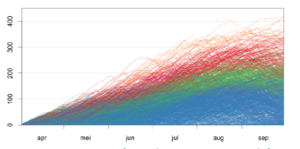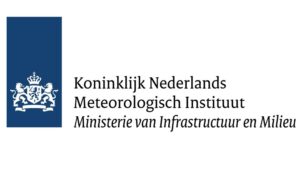WP1 – “Climate forcing”
WP1: Climatic forcing to support climate change assessment
Leader: Dr. ir. Niko Wanders, Utrecht University
When looking at climate proofing of the Dutch water systems and landscapes, we need to take into account the future impacts of a changing climate. There are multiple ways of incorporating climate change and projecting the changes in extreme events in the future. Historically we have mostly used transient climate simulations that provided a realisation of the future based on different Representative Concentration and Shared Socio-economic Pathways. However recently, we have seen the increased use of Large Ensemble simulations that simulate a multitude of weather events under a given level of global warming (e.g. van der Wiel et al., 2019). These large ensemble simulations also allow for a better simulation of future extreme events, as they provide more realizations of the future climate (Figure 3). As part of the to be delivered climate scenarios of the Dutch weather institute (KNMI’23), the KNMI is also using these large ensemble simulations to provide a multitude of realizations of the future climate in the years 2030, 2040 and 2050. In WaterScape we will take advantage of this newly available data and use it to make climatic forcing of future weather and meteorological extreme conditions. Within WaterScape we define climatic forcing as: modelled physically consistent descriptions of observed drought and flood events, either for the current climate or translated to warmer future climates. The focus is on physical processes rather than event probability. These climatic forcing will feed into the other WPs to provide information about the future meteorological conditions. WP 1 aims to understand where climate extremes lead to severe impacts on water availability and result in increased pressure on agriculture, nature, industry and drinking water supply in the current water system.
Within WP1, we will select events that have been of great importance in the different case study regions (e.g. drought 2022) and will select similar events in the KNMI‘23 climate scenarios to develop the modelled physically consistent descriptions of these events. These events will then be used as a basis to study how climate change will affect the water future of the different case study regions (WP2-3) and how we can mitigate these impacts by changing governance arrangements (WP4-5) and spatial design of the landscape (WP6).

2000-year of cumulative precipitation deficit (precipitation – vaporation) as derived from a large ensemble simulation for the Bilt weather station
Involved consortium partners:
Dr Karin van der Wiel


